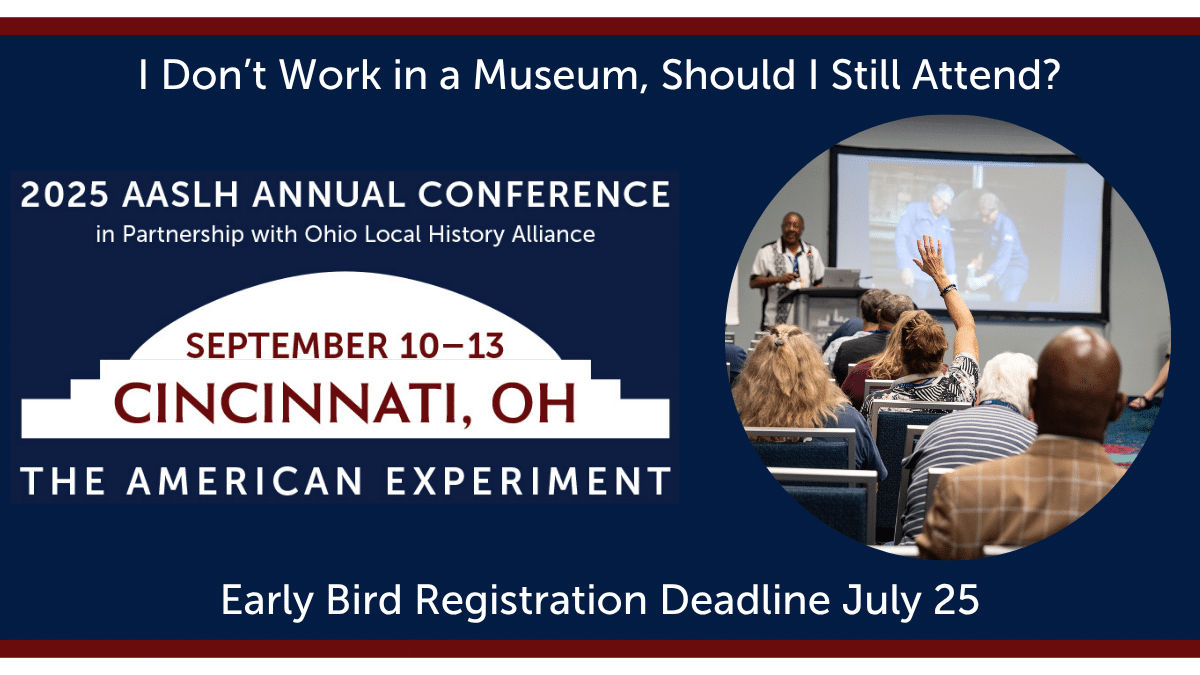
By Bethany Hawkins, AASLH Chief of Operations
Every year on May 1, the museum field celebrates MayDay by doing one thing to better prepare their organizations for an emergency or disaster. The definition of emergencies and disasters, however, is changing. The emphasis used to be on collections and buildings. How do we protect items from agents of deterioration, natural disasters, or fire? Now, organizations must contend with the possibility of vandalism, protests, and even violence in their buildings or historic sites.
Plan to set aside time between now and May 1 to review your emergency procedures. Set up scenarios to allow your staff and volunteers to practice the procedures related to tornados, hurricanes, floods, and violence on the premises. The plan is useless if no one knows how to execute it and in the midst of an emergency is not the time to thumb through your disaster plan.
If you do not have an emergency plan or your plan needs to be expanded to include areas outside collections, these free resources will help you prepare for security issues at your organization.
AASLH Technical Leaflet #220
Closing the Barn Door: Dealing with Security Issues
by Stevan P. Layne, CPP, CIPM
This resource outlines the standard safety and security measures a museum should take to prevent theft and other losses, with particular emphasis on daily closing procedures. When staff in a museum environment feel safe it is easy to become complacent with measures of security. A daily closing checklist guides historical institutions in “closing the barn door” safely each day. Additionally, it emphasizes the need for proper screening of employees, affordable surveillance and alarm systems, and how to deal with unruly patrons.
Building an Emergency Plan: A Guide for Museums and Other Cultural Organizations
The Getty Museum
This free PDF provides guidance on how to create a plan for all types of emergencies any organization with a collection can use. It also includes information on physical safety for employees and visitors.
Chapter 10: Emergency Planning
National Park Service Museum Handbook
This chapter from the multivolume Museum Handbook written by the National Park Service addresses almost all emergencies that can take place at a history or cultural organization. In addition to great advice in caring for objects and structures, it addresses active shooters, protestors, and more.
Guidance for Protest Preparedness at Cultural Institutions
Developed by the Oklahoma Museums Association in collaboration with the DC Alliance for Response
Protests are becoming more common at museums and historical organizations. This guide provides a checklist of things to consider if a protest happens at your location in order to protect collections, employees, and visitors.
How to Respond to an Active Shooter
by Morgan O’Rourke, Risk Management
Risk Management is a website with lots of short articles on topics related to emergency preparedness from an insurer’s perspective. This resource offers practical, possibly life-saving advice for organizations of all sizes.
Insurance Considerations for Shooting Incidents
by Robert M. Horkovich and Jorge Aviles, Risk Management
Any emergency or disaster your organization can face will impact your insurance coverage, even mass shootings. Horkovich and Aviles detail the ways you are covered under your general liability insurance and where there may be coverage gaps.
Museum Safety: A Practical Guide to Protecting Visitors, Staff, and Collections
by Austin Sharpe, Director of Security, Addison Gallery of American Art, Phillips Academy
This PowerPoint from the New England Museum Association provides practical suggestions for keeping people, objects, and property safe in museums. Focused on art museums, the guide is relevant for any museum wanting to improve security.



